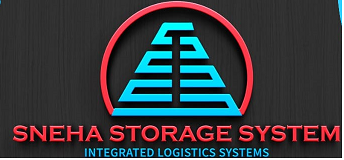Racking System Manufacture: An Overview
Introduction
Racking systems are integral to the logistics and warehousing industry, providing structured and efficient storage solutions for various products. The manufacturing of racking systems involves sophisticated engineering processes to ensure durability, functionality, and adaptability to diverse storage needs. This overview delves into the key aspects of racking system manufacture, from design to production and quality control.
Design and Planning
The manufacturing process begins with meticulous design and planning. Designers and engineers collaborate to create racking systems that meet specific requirements such as load capacity, space optimization, and ease of access. Modern racking systems come in various types including selective, drive-in, push-back, and pallet flow racks. Each type is designed to cater to different storage needs. For instance, selective racks are ideal for high-density storage and easy access, while drive-in racks are suited for bulk storage with fewer access points.
Material Selection
Choosing the right materials is crucial for the durability and safety of racking systems. Typically, steel is the primary material used due to its strength and resilience. Steel components are often cold-rolled or hot-rolled, with a powder-coated or galvanized finish to enhance durability and resistance to corrosion. In some cases, aluminum or other alloys may be used, particularly for lightweight or specialized applications.
Manufacturing Process
The production of racking systems involves several key stages:
-
Cutting and Shaping: Raw steel or other materials are cut to size using precision machinery. This process involves cutting beams, uprights, and other components to specific dimensions as per the design specifications.
-
Welding and Assembly: Cut materials are welded together to form the racking components. Automated welding machines and skilled welders ensure strong, precise joints. After welding, the components are assembled into sections or modules.
-
Finishing: The assembled racks undergo finishing processes, such as powder coating or galvanizing. Powder coating provides a smooth, durable surface and enhances the aesthetic appeal of the racks. Galvanizing involves coating the racks with zinc to protect against rust and corrosion.
-
Inspection and Testing: Rigorous quality control is crucial. Each racking system is tested for strength and stability to ensure it meets safety standards. This includes load testing and visual inspections to detect any defects or weaknesses.
-
Packaging and Shipping: Once approved, the racking systems are disassembled (if necessary), packaged securely, and prepared for shipping. This step involves careful handling to prevent damage during transit.
Customization and Innovation
Manufacturers often offer customization options to meet specific client needs. This can include adjustable shelving, modular designs, and bespoke dimensions. Innovations in racking technology, such as integration with warehouse management systems (WMS) and automation, are also becoming increasingly prevalent. Advanced systems might incorporate sensors and tracking technologies to improve inventory management and operational efficiency.
Compliance and Standards
Adhering to industry standards and regulations is essential in racking system manufacture. Standards such as those set by the American National Standards Institute (ANSI) or the International Organization for Standardization (ISO) ensure that racking systems are safe, reliable, and compliant with international safety norms.
Conclusion
Racking system manufacture is a complex process that combines design ingenuity, material science, and precision engineering. From selecting high-quality materials to ensuring rigorous quality control, every step is crucial to producing reliable and efficient storage solutions. As industries evolve, so too do the innovations in racking systems, continuously enhancing their functionality and adaptability to meet the growing demands of modern logistics and warehousing.
